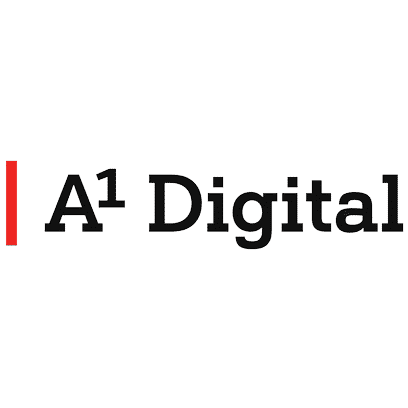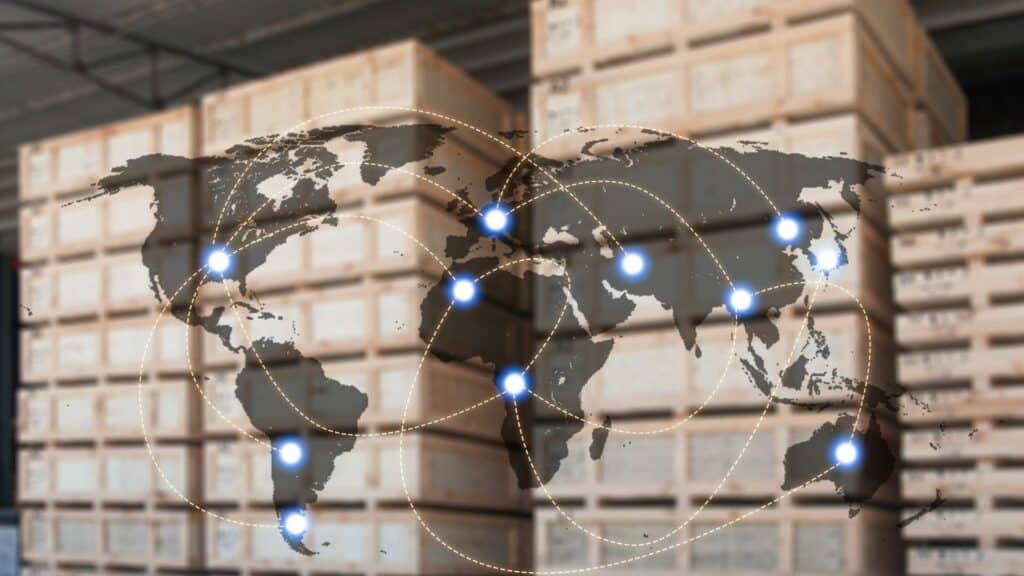IoT-Konnektivität: moderne Vernetzung
IoT-Konnektivität: Wie Daten in die Cloud kommen
Sie möchten IoT-Konnektivität verstehen? IoT selbst steht für „Internet der Dinge“ und beschreibt die Möglichkeit, dass physische und virtuelle Objekte miteinander vernetzt werden können. Wenn Sie also über Ihr Handy zuhause das Licht anschalten, nutzen Sie IoT!
Mit M2M Allnet profitieren Sie von professionellen Lösungen für Ihre IoT-Bedürfnisse: Wir bieten Ihnen nicht nur die passenden SIM-Karten, sondern auch die passenden Tarife. Mit dem Zugang in alle Netze bleiben Sie jederzeit verbunden, egal wo Ihre Geräte eingesetzt werden.
Vertrauen Sie auf unsere Expertise und machen Sie Ihr Unternehmen fit für die digitale Zukunft!
Was ist IoT-Konnektivität?
IoT-Konnektivität ist das Verbindungsstück zwischen Hardware und IoT-Plattform. Diese wiederum dient zur Vermittlung zwischen Geräten, Maschinen und dem Internet der Dinge oder IoT. Die IoT-Plattformen gelten dabei als systemübergreifende Verknüpfung verschiedener Geräte, Maschinen und Anwendungen. Konnektivität ist der kleinste Teil, den es benötigt, um sicherzustellen, dass IoT-Technologien mit anderen bereitgestellten Integrationen zusammenarbeiten können. In Administrationssystemen muss jedoch das gesamte Netzwerk – und die Infrastruktur – fließend miteinander agieren und das System gestaltet sich komplex.
Ziel der IoT-Konnektivität, die über M2M-Karten hergestellt wird, ist daher die Datenanalyse und das Steuern von Funktionen. Die Plattformen sind somit die Basis bzw. Grundlage des IoT – Prozesse können so automatisiert und optimiert werden.
- Digital networking
- Lowered costs
- Real time data
- Remote service
- Optimized availability
SIM-Karten Typen für die IoT-Datenübertragung
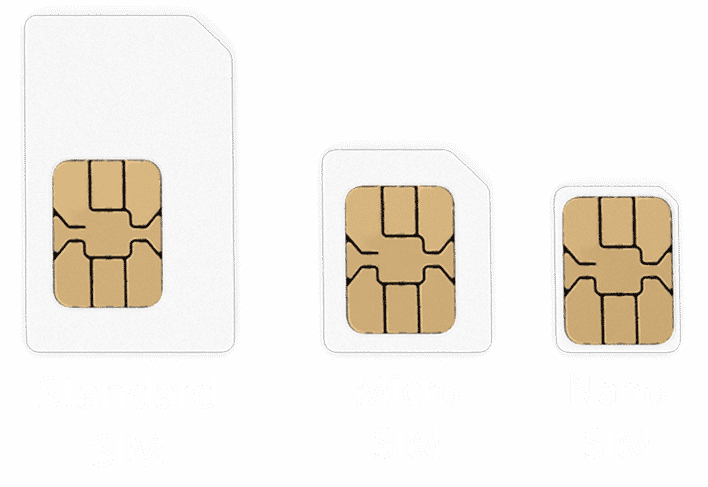
Standard SIM
Network all your smart IoT devices, across all networks, transnationally with M2M Allnet!
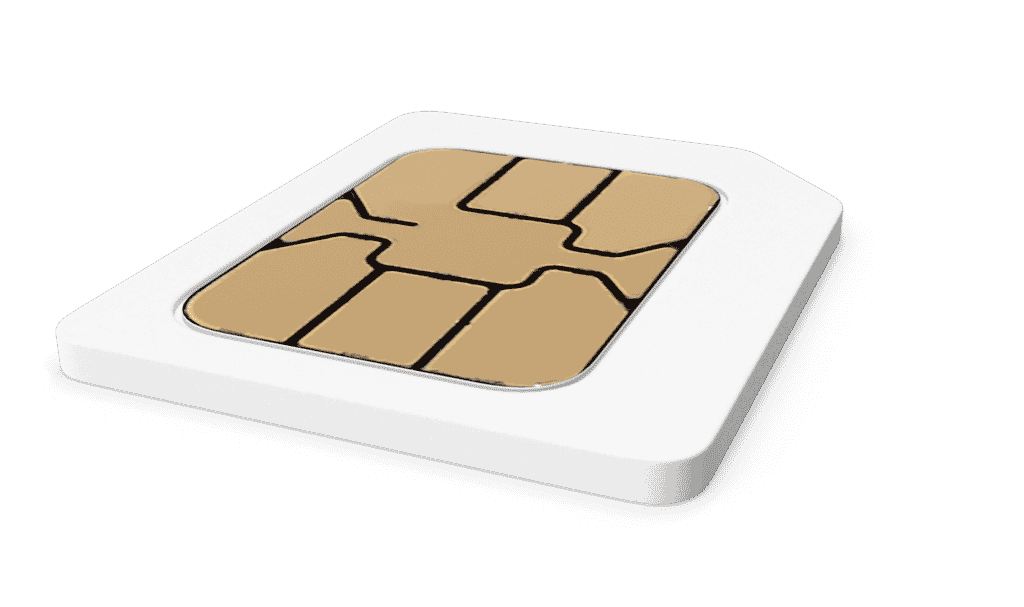
Industry SIM
Bleiben Sie überall handlungsfähig und verbinden Sie mit M2M Allnet alle Industriemaschinen weltweit!
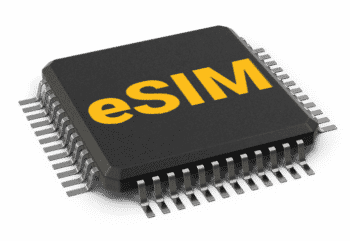
eSIM
Der Nachfolger der klassischen SIM-Karte fest ist ins Endgerät eingebaut – mit allen bekannten Vorteilen!
Vorteile von IoT-Konnektivität
IoT-Konnektivität bietet für verschiedene Branchen unterschiedliche Vorteile:
- Industrie: In der Industrie optimiert IoT Produktionsabläufe, ermöglicht vorausschauende Wartung und reduziert Ausfallzeiten, was die Effizienz steigert, und Kosten senkt.
- Baubranche: Im Bauwesen ermöglicht IoT eine effiziente Überwachung von Maschinen, Materialien und Arbeitsprozessen in Echtzeit.
- Sicherheit: Die Sicherheitsbranche profitiert von intelligenten Überwachungssystemen, die Bedrohungen frühzeitig erkennen können.
IoT ist die moderne Lösung, um die Arbeitsabläufe Ihrer Branche zu optimieren. Kommen Sie heute noch auf uns zu und finden Sie heraus, wie auch Sie von dieser Technologie profitieren können!
Wenn Sie sich für das Thema tiefer interessieren und wir Sie neugierig gemacht haben, schauen Sie in unserem Blog vorbei: Hier geben wir einen kleinen Einblick in unser Unternehmen, informieren Sie über neueste Technologien und geben einen Überblick über fachliche Themen!
Plattformen für die IoT-Konnektivität: Welche sind das?
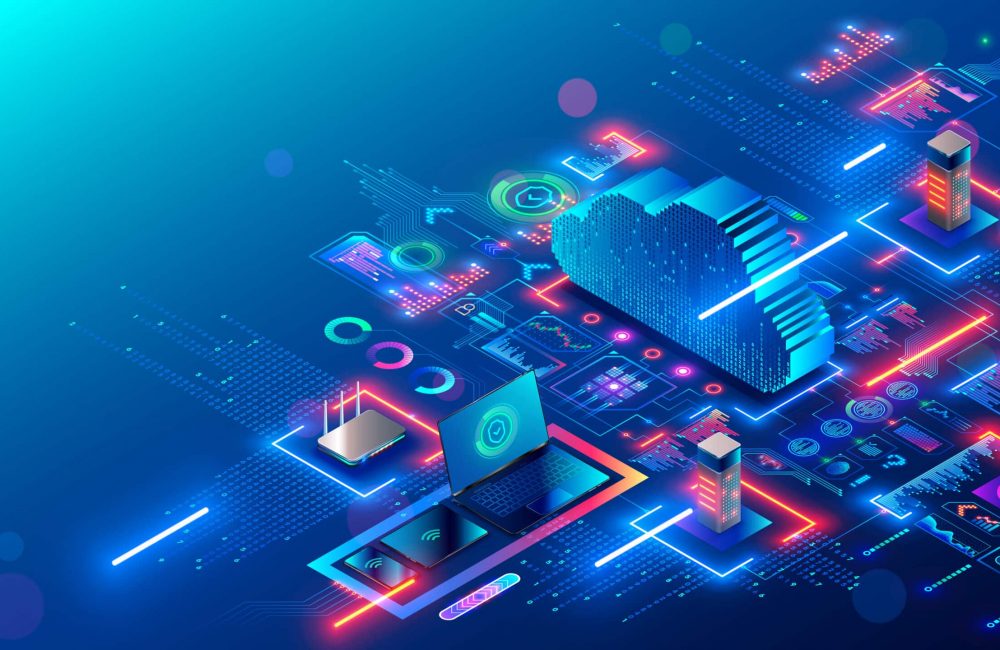
This question is not so easy to answer because there are different forms of IoT platforms. IoT platforms are given the ability to communicate with the help of SIM cards. All platforms have one thing in common - the networking and cross-system linking of different IoT devices.
Im Allgemeinen haben IoT-Plattformen die Aufgabe, dass verschiedene Geräte und M2M-Maschinen untereinander kommunizieren, Daten austauschen und eigenständig in der Lage sind, in Prozesse einzugreifen. Man könnte sagen, dass Sie als Übersetzer zwischen Geräten und Anwendungen fungieren. Das Device-Management, identifizieren und verbinden von Geräten, zählt zu den Aufgaben von IoT-Plattformen.
Die IoT-Plattformen sammeln, verwalten und analysieren Daten und bereiten diese auf. Dafür gibt es kein Standardverfahren. Abhängig von Branche, Ort und Ziel werden individuelle Systeme geschaffen und mit den IoT-Plattformen vernetzt. Die Umsetzung und Installation der Sensoren, Aktoren und die Verknüpfung zu den verschiedenen Plattformen ist sehr simpel. Zukünftige Projekte sollten dabei beachtet werden. Mehr Informationen über IoT-Plattformen finden Sie auf unserer Seite.
Determine the tariff that best suits you!
IoT-Konnektivität: Beispiele
- Industry 4.0
- Logistic 4.0
- Traffic 4.0
- Energy 4.0
- IoT Security
- IoT Production
- Innovations Management
M2M Allnet ist Ihr zuverlässiger Partner für IoT-Solutions in allen Branchen. Wir beraten Sie gerne dazu, wie Sie die nahtlose, weltweite Datenübertragung, die durch IoT-Konnektivität möglich gemacht wird, für Ihre Vorhaben optimal nutzen können.
IoT-Konnektivität mit den passenden Geräten
All devices that are connected to a network can be called IoT devices. Data is collected, analysed and evaluated. Processes are automated - human action or intervention is no longer necessary.
In Zeiten von IoT entstehen dabei viele neue Funktionen. Doch wenn es darum geht, die eigenen IoT Geräte miteinander zu verknüpfen, steht man häufig vor einer Riesenauswahl an Anbietern und verschiedensten Techniken – und nicht jede Konnektivität passt zum Anwendungsfall. Wir helfen dabei, die richtige Wahl für die optimale SIM-Karte und den passenden M2M-Tarif zu treffen!
IoT-Konnektivität über Sensoren

Sensors measure values such as temperature or lighting conditions. The collected data from the sensors is then evaluated using IoT platforms and forwarded to the actuators. These are able to initiate changes to temperature or light, for example.
IoT-Geräte finden bei Smart-Home und Smart-Factory Anwendungen Ihren Einsatz. Grundsätzlich erfolgt eine Verknüpfung von einem physischen Gerät mit einem virtuellen Netzwerk. Durch diese Verbindung werden Funktionen wie Sprachsteuerung oder Fernsteuerung von Heizung oder Lampen, u.v.m. möglich.
Oder auch das Überprüfen der Kamera zuhause, dem Sicherheitssystem via App und Handy – all dies wäre ohne IoT-Konnektivität nicht möglich. Bei IIoT (Industrial Internet of Things) werden die smarten Technologien eingesetzt, um Prozesse zu optimieren und zu automatisieren.
Da die Einzelfälle zahlreich sind und die Möglichkeiten endlos scheinen, raten wir die Wahl immer anhand der eigenen Anforderungen zu treffen. Nur so können IoT-Projekte langfristig effizient und vor allem kostensparend arbeiten. Sie sind unsicher? Wir unterstützen Sie jederzeit und helfen bei der richtigen Entscheidung!
We will be happy to advise you in a non-binding initial meeting - contact us!
We will be happy to advise you in a non-binding initial meeting - contact us!
Challenges for IoT connectivity
IoT oder IIoT streben danach, so viele Daten wie möglich zu sammeln. Anschließend daran müssen die Informationen verarbeitet und in ein zentralisiertes System gebracht werden. Meist ist dies das Kontrollsystem eines bestimmten Netzwerks und wird daher durch eine Cloud, ein zentrales Rechenzentrum oder ausgewiesenen Servern realisiert. Die Verbindung der IoT-Geräte mit der Cloud, die sogenannte IoT-Cloud-Integration spielt also im reibungslosen Ablauf einer IoT-Konnektivität eine zentrale Rolle.
Bildlich gesprochen kann man Konnektivität mit einem Handschlag oder einer Staffelstabübergabe vergleichen. Es wird eine Verbindung hergestellt und die Informationsübertragung angestoßen. Dabei werden kompatible Sicherheitsmaßnahmen getroffen – es wird sichergestellt, dass die Verbindung auch legitim ist. Doch je nach Anwendung treten Schwierigkeiten auf und Herausforderungen müssen gemeistert werden. Im Folgenden lesen Sie, welche das sein können.
1. Kompatibilität
Für IoT gibt es keine Standards. Daher sind in den letzten Jahren zahlreiche Unternehmen entstanden, die mit eigenen Lösungen und Betriebssystemen agieren. Das führte allerdings zu einem Becken voller Subsystemen, die nicht miteinander interagieren können und stellt Firmen vor neue Herausforderungen.
Zwecks Datenaustauschs ist es in der heutigen Zeit unerlässlich, Geräte und Systeme miteinander zu koppeln. Daher sind immer mehr IT-Administrationen damit beschäftigt, Geräte zu verknüpfen und Partner zu finden, die passende Integrationen bereits anbieten.
Datenaustausch: Wieso wird er immer wichtiger?
Ganz einfach: Vernetzung wird in einer zunehmend globalen Welt immer bedeutender. Nicht nur die sozialen Medien arbeiten nach diesem Grundprinzip: Auch wird IoT in der Industrie, in diversen Wirtschaftszweigen, Ämtern oder Branchen stets erfolgreicher. Denkt man beispielsweise an Behörden wie Städte oder Gemeinden, so weiß man aus eigener Erfahrung, dass diese immer mehr Kosten sparen und Geld erwirtschaften müssen. Also versuchen sie ihre Effizienz zu steigern. Deswegen wird unter anderem im Bereich Parkraum angesetzt. IoT und M2M wird dazu verwendet, um die Auslastung von Parkzonen zu steuern. Natürlich lassen sich neben der Kontrolle von Auslastung auch einfache Dinge wie das Ausschalten von Parklampen regeln. Muss der Bereich nicht beleuchtet werden, kann das Licht einfach ausgeschaltet und somit Strom eingespart werden – und dies ist nur eines von vielen Beispielen.

2. IoT-Security
Im Bereich Sicherheit ist das Feld IoT ebenfalls vielfältig. Zahlreiche Geräte werden bereits mit Sicherheitseinstellungen geliefert – so wie der Fingerabdruck-Scan beim Smartphone. Doch leider entsprechen auch viele Voreinstellungen nicht den gängigen Sicherheitsstandards, die beispielsweise für Unternehmen notwendig sind.
Hier setzt M2M-Sicherheit an, indem sie eine zuverlässige und umfassende Absicherung für vernetzte Geräte und Netzwerke bietet. Mit robusten Verschlüsselungsprotokollen und Echtzeitüberwachung sorgt M2M für den Schutz sensibler Daten und verhindert unbefugten Zugriff – eine essenzielle Grundlage für sichere IoT-Anwendungen in Unternehmen.

Sicherheit bei IoT-Konnektivität bewahren
Deswegen ist es nötig, dass IT-Abteilungen der Betriebe die Geräte zuerst einer Sicherheitskontrolle und entsprechenden Anpassungen unterziehen. Nichtsdestotrotz besteht bei einer hohen Anzahl an Schnittstellen und IoT-Geräten auch immer ein gewisses Risiko. Schließlich sind auch die Angriffsstellen zahlreicher.
Das Thema Sicherheit scheint daher eine besonders große Herausforderung für den Bereich IoT darzustellen und wird sich in Zukunft noch weitreichend entwickeln. Die Forschung und Entwicklung arbeiten kontinuierlich daran, Sicherheitslücken aufzudecken und Lösung zur Schließung derer zu entwickeln – doch die Hürde ist hoch. Schnelllebigkeit und ein steigendes Maß an Cyber-Kriminalität lassen die Ansprüche wachsen.
3. Skalierung
Eine weitere Hürde ist im Bereich der Skalierung zu finden. Doch was bedeutet Skalierung eigentlich? Grundlegend wird damit die Fähigkeit beschrieben, Dinge auszuweiten und vervielfältigen zu können.
IoT-Konnektivität für Unternehmen
Für Unternehmen ist dies besonders dann wichtig, wenn sie daran interessiert sind, ihre Infrastruktur zu skalieren. Nachhaltigkeit und Effizienz spielen dabei eine maßgebende Rolle. Meist sind zusätzliche Geräte wie Router, Gateways oder Kameras und Sensoren erforderlich, die über entsprechende Anbieter und Plattformen Aktivitäten kontrollieren und steuern.
A classic example would be automatic system updates for company computers or corresponding security systems. To make these processes run smoothly, IT departments need to automate and adapt processes so that scaling with IoT is also possible. Adaptability and compatibility must also be checked regularly.
Skalierung ist also nicht nur eine große Herausforderung, sondern erfordert auch ein hohes Maß an Betreuung und dauerhafter Kontrolle. Nicht umsonst sind oftmals ganze Abteilungen mit dem Thema betraut und es bleibt unerlässlich entsprechende Experten zu engagieren.

4. Bandbreite und Datensatz
The terms bandwidth and data throughput first of all need a definition. While bandwidth is a unit for measuring the processing speed of signal transmission and is probably a common term, data throughput is more difficult. By definition, data throughput is the amount of data per time that can be transmitted over a medium. So here, too, we are talking about the transmission of information at a certain speed.

Konnektivität für das Bewegtbild
Das Bewegtbild ist hier ein großes Thema. Videokonferenzen, Videoüberwachung oder Bilddatenbanken benötigen eine große Bandbreite, damit sie flüssig und möglichst in Echtzeit übertragen werden können.
Doch wie funktioniert das System, wenn verschiedene Ableger über zahlreiche Standorte verteilt sind? Oder wenn es notwendig wird, dass ein Unternehmen große Datenmengen sammeln muss? Hier werden meist Daten auf lokalen Servern heruntergeladen. Bei diesem Prozess ist es jedoch notwendig, dass ITler überprüfen, ob die Kosteneffizienz gewährleistet ist, oder ob auf andere Konnektivitätslösungen zurückgegriffen werden muss.
You are unsure and need advice? We will be happy to answer all your questions!
You are unsure and need advice? We will be happy to answer all your questions!
M2M: Ihr Partner für reibungslose IoT-Konnektivität
Mit M2M Allnet haben Sie einen zuverlässigen Partner an Ihrer Seite, der Ihnen eine nahtlose IoT-Konnektivität bietet. Unsere M2M-SIM-Karten sorgen für maximale Flexibilität, denn eine Karte ermöglicht den Zugang zu allen verfügbaren Netzen – national und international. So bleiben Ihre Geräte stets verbunden, ohne sich auf einen einzelnen Netzbetreiber festlegen zu müssen.
Besonders in komplexen IoT-Umgebungen, in denen verschiedene IoT-Kommunikationsprotokolle zum Einsatz kommen, sorgt M2M Allnet für eine sichere Datenübertragung.
Ob in der Industrie, Logistik, Sicherheit oder in einer anderen Branche – mit M2M Allnet profitieren Sie von innovativen Lösungen, die Ihre Prozesse effizienter und zukunftssicher gestalten. Entscheiden Sie sich für M2M Allnet und erleben Sie IoT-Konnektivität ohne Grenzen!
IoT - Topics in detail
